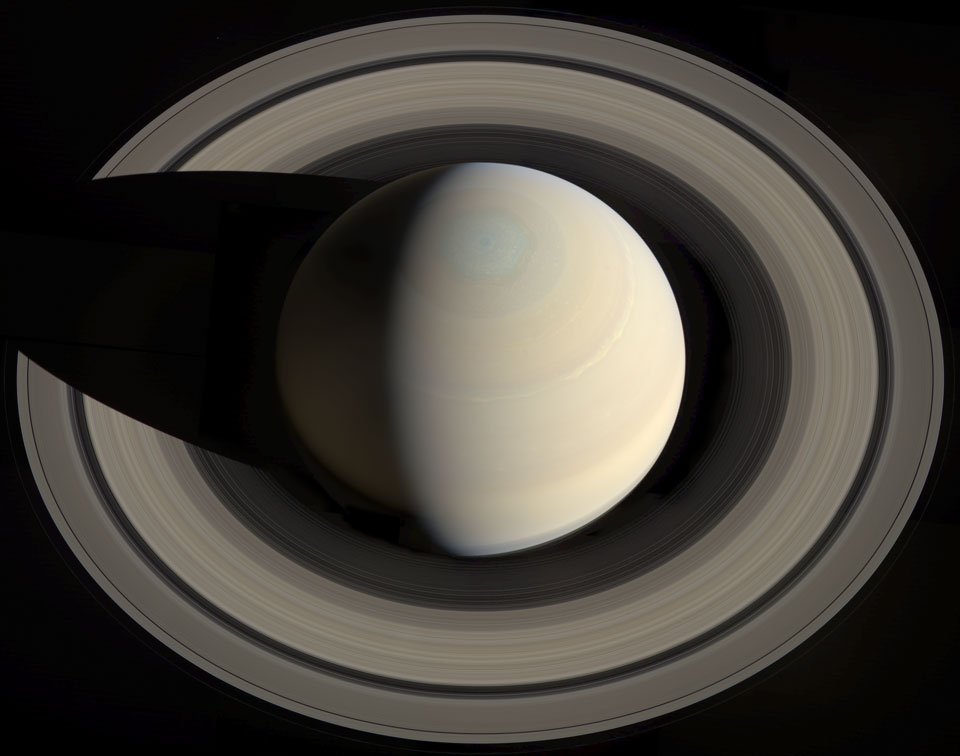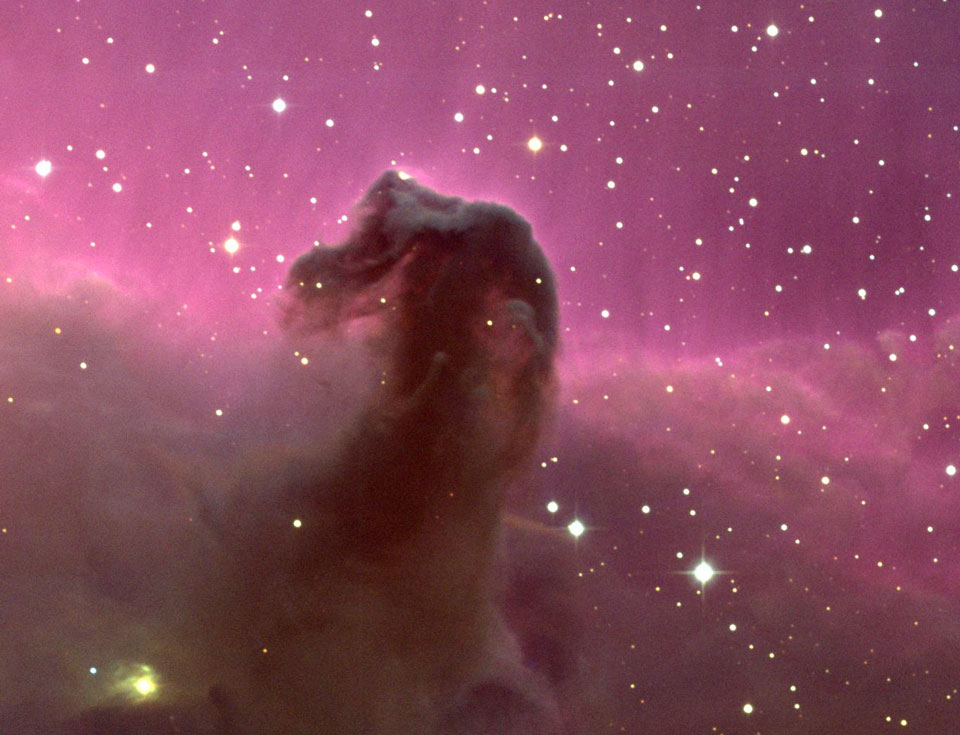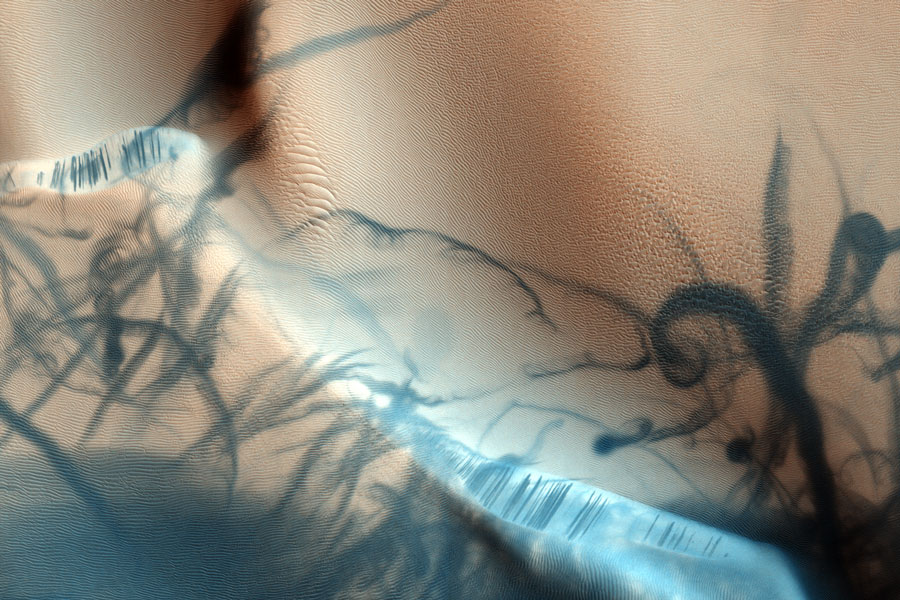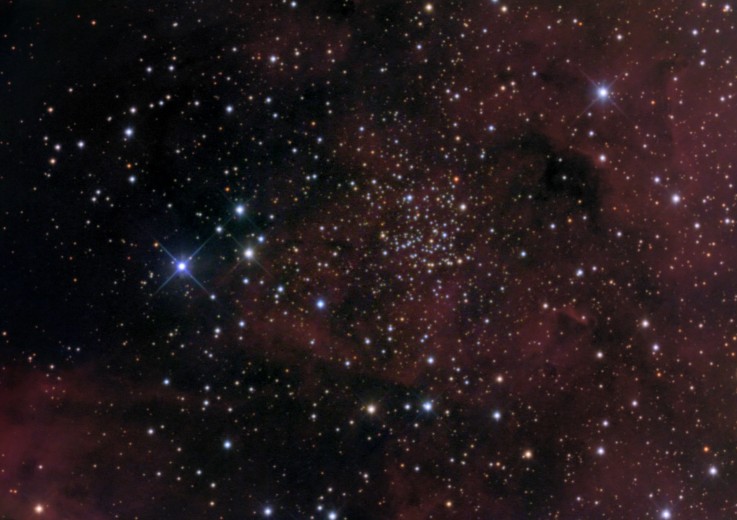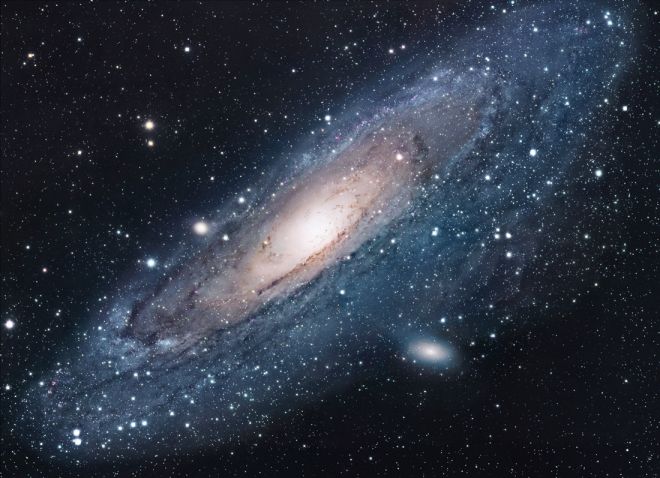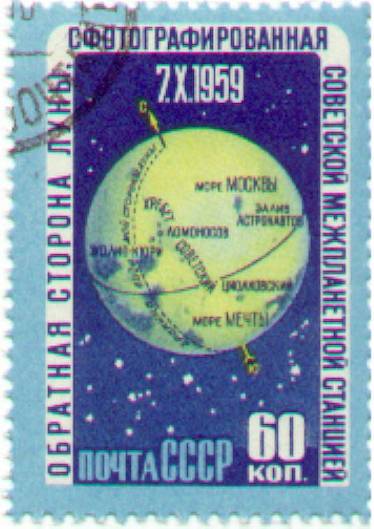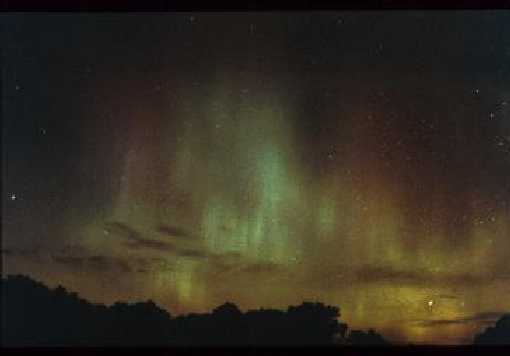| << Previous | Index | Next >> |
2014 Whatever hit Mimas nearly destroyed it. What remains is one of the largest impact craters on one of Saturn's smallest moons. The crater, named Herschel after the 1789 discoverer of Mimas, Sir William Herschel, spans about 130 kilometers and is pictured above. Mimas' low mass produces a surface gravity just strong enough to create a spherical body but weak enough to allow such relatively large surface features. Mimas is made of mostly water ice with a smattering of rock - so it is accurately described as a big dirty snowball. The above image was taken during the 2010 February flyby of the robot spacecraft Cassini now in orbit around Saturn. A recent analysis of Mimas's unusual wobble indicates that it might house a liquid water interior ocean.
2013 This image of Saturn could not have been taken from Earth. No Earth based picture could possibly view the night side of Saturn and the corresponding shadow cast across Saturn's rings. Since Earth is much closer to the Sun than Saturn, only the day side of the ringed planet is visible from the Earth. In fact, this image mosaic was taken earlier this month by the robotic Cassini spacecraft now orbiting Saturn. The beautiful rings of Saturn are seen in full expanse, while cloud details are visible including the polar hexagon surrounding the north pole, and an extended light-colored storm system.
2012 One of the most identifiable nebulae in the sky, the Horsehead Nebula in Orion, is part of a large, dark, molecular cloud. Also known as Barnard 33, the unusual shape was first discovered on a photographic plate in the late 1800s. The red glow originates from hydrogen gas predominantly behind the nebula, ionized by the nearby bright star Sigma Orionis. The darkness of the Horsehead is caused mostly by thick dust, although the lower part of the Horsehead's neck casts a shadow to the left. Streams of gas leaving the nebula are funneled by a strong magnetic field. Bright spots in the Horsehead Nebula's base are young stars just in the process of forming. Light takes about 1,500 years to reach us from the Horsehead Nebula. The above image was taken with the 0.9-meter telescope at Kitt Peak National Observatory.
2011
2010 The lovely, symmetric planetary nebula cataloged as MWP1 lies some 4,500 light-years away in the northern constellation Cygnus the Swan. One of the largest planetary nebulae known, it spans about 15 light-years. Based on its expansion rate the nebula has an age of 150 thousand years, a cosmic blink of an eye in the 10 billion year life of a sun-like star. But planetary nebulae represent a very brief final phase in stellar evolution, as the nebula's central star shrugs off its outer layers to become a hot white dwarf. In fact, planetary nebulae ordinarily only last for 10 to 20 thousand years. As a result, truly ancient MWP1 offers a beautiful challenge to astronomers studying the evolution of its central star.
2009 Who's been marking up Mars? This portion of a recent high-resolution picture from the HiRISE camera on board the Mars Reconnaissance Orbiter shows twisting dark trails criss-crossing light colored terrain on the martian surface. Newly formed trails like these had presented researchers with a tantalizing martian mystery but are now known to be the work of miniature wind vortices known to occur on the red planet - martian dust devils. Such spinning columns of rising air heated by the warm surface are also common in dry and desert areas on planet Earth. Typically lasting only a few minutes, dust devils become visible as they pick up loose red-colored dust leaving the darker and heavier sand beneath intact. On Mars, dust devils can be up to 8 kilometers high. Dust devils have been credited with unexpected cleanings of mars rover solar panels.
2008 Where's the pulsar? Previously, the nebula CTA 1 showed an expanding supernova remnant, a jet, and a point source expected to be a pulsar -- a rotating neutron star producing pulses at radio energies. But no radio pulses were detected. Now NASA's recently deployed Fermi Space Telescope has solved the mystery with some of its initial observations indicating that the point source is pulsing at gamma-ray energies. The strange source is the first of a class that might be dubbed "dark pulsars", rotating neutron stars that appear to pulse only in high-energy radiations. Such pulsars might not be detectable in radio or visible light if they emit those radiations into a narrow beam not seen from Earth. If true, our Galaxy might have more pulsars left for Fermi to discover. Studying the gamma-ray properties of pulsars gives valuable clues to physics of the emission regions on neutron stars. In this graphic, the pulsar's position is indicated in the wider CTA 1 supernova remnant. An artist's illustration of the pulsar beaming at gamma-ray energies is shown in the inset.
2007 How will our universe end? Recent speculation now includes a pervasive growing field of mysterious repulsive phantom energy that rips virtually everything apart. Although the universe started with a Big Bang, analysis of cosmological measurements allows a possibility that it will end with a Big Rip. As soon as few billion years from now, the controversial scenario holds, dark energy will grow to such a magnitude that our own Galaxy will no longer be able to hold itself together. After that, stars, planets, and then even atoms might not be able to withstand the expansive internal force. Previously, speculation on the ultimate fate of the universe centered on either a re-collapsing Big Crunch or a Big Freeze. Although the universe's fate is still a puzzle, piecing it together will likely follow from an increased understanding of the nature of dark matter and dark energy.
2006 Clyde Tombaugh discovered planet Pluto in 1930 while surveying the skies with the 13-inch Lawrence Lowell Telescope. But the skilled and careful astronomer also went on to discover star clusters, comets, asteroids, and clusters of galaxies. For example, pictured is galactic or open star cluster Tombaugh 4 in the northern constellation Cassiopeia. Published in 1941, Tombaugh's description, based on his photographic images from the Lowell 13-inch, indicates the cluster is small and faint, and comprised of about 30 stars. Using the apparent brightness of the cluster stars he estimated the distance to be 20 to 30 thousand light-years, making Tombaugh 4 over 10 light-years in diameter. This deep color image, made with a modern ccd camera and another 13-inch telescope, includes the region's foreground stars and faint nebulosities.
2005 Orbiting in the plane of Saturn's rings, Dione and the other icy saturnian moons have a perpetual ringside view of the gorgeous gas giant planet. Of course, while passing through the ring plane the Cassini spacecraft also shares their stunning perspective. The rings themselves can be seen slicing across the bottom of this Cassini snapshot. Remarkably thin, the bright rings still cast arcing shadows across the planet's cloud tops. Pale Dione, in the foreground, is about 1,100 kilometers across and orbits over 300,000 kilometers from the visible outer edge of the A ring.
T
2004 Why don't these pieces fit? This third quarter Moon (left) and first quarter Moon were both photographed during the last lunar cycle or lunation with the same telescope and camera. But, simply combining the pictures into one sharp, full surface view would clearly be a problem. In fact, on October 6th the Moon's third quarter phase happened to occur near lunar apogee, the farthest point in the Moon's orbit. On September 21st, the first quarter phase fell close to lunar perigee, the Moon's closest approach to planet Earth. Viewed two weeks apart, the resulting difference in apparent sizes would not be noticed by casual skygazers, but the simultaneous side by side comparison makes it hard to ignore. Skygazers will likely notice the Moon next week though, as it slides through Earth's shadow during October 27th's total lunar eclipse.
2003 Although you've surely seen it, you might not have noticed it. During a cloudless twilight, just before sunrise or after sunset, part of the atmosphere above the horizon appears slightly off-color, slightly pink. Called the Belt of Venus, this off-color band between the dark eclipsed sky and the blue sky can be seen in nearly every direction including that opposite the Sun. Straight above, blue sky is normal sunlight reflecting off the atmosphere. In the Belt of Venus, however, the atmosphere reflects light from the setting (or rising) Sun which appears more red. The Belt of Venus can be seen from any location with a clear horizon. Pictured above, the Belt of Venus was photographed above morning fog in the Valley of the Moon, a famous wine-producing region in northern California, USA. The belt is frequently caught by accident in other photographs.
2002 Andromeda is the nearest major galaxy to our own Milky Way Galaxy. Our Galaxy is thought to look much like Andromeda. Together these two galaxies dominate the Local Group of galaxies. The diffuse light from Andromeda is caused by the hundreds of billions of stars that compose it. The several distinct stars that surround Andromeda's image are actually stars in our Galaxy that are well in front of the background object. Andromeda is frequently referred to as M31 since it is the 31st object on Messier's list of diffuse sky objects. M31 is so distant it takes about two million years for light to reach us from there. Although visible without aid, the above image of M31 is a digital mosaic of 20 frames taken with a small telescope. Much about M31 remains unknown, including how the center acquired two nuclei.
2001 Why does the Sombrero Galaxy look like a hat? Reasons include the Sombrero's unusually large and extended central bulge of stars, and dark prominent dust lanes that appear in a disk that we see nearly edge-on. Billions of old stars cause the diffuse glow of the extended central bulge. Close inspection of the bulge in the above photograph shows many points of light that are actually globular clusters. M104's spectacular dust rings harbor many younger and brighter stars, and show intricate details astronomers don't yet fully understand. The very center of the Sombrero glows across the electromagnetic spectrum, and is thought to house a large black hole. Fifty million-year-old light from the Sombrero Galaxy can be seen with a small telescope towards the constellation of Virgo.
2000 This vintage 60-kopek stamp celebrates a dramatic achievement. On the 7th of October, 1959 (7/X/1959), the Soviet interplanetary station which has come to be called "Luna 3" successfully photographed the far side of the moon giving denizens of planet Earth their first ever view of this hidden hemisphere. Lacking the digital image technology familiar now, Luna 3 took the pictures on 35mm film which was automatically developed on board. The pictures were then scanned and the signal transmitted to Earth days later in what was perhaps also the first interplanetary fax. In all, seventeen pictures were received providing enough coverage and resolution to construct a far side map and identify a few major features. Depicted on the stamp are regions dubbed the Sea of Moscow, the Soviet Mountains, the Bay of Astronauts, and the Sea of Dreams.
1999 The Sun rotates on its axis about once every 27 days. How can you tell? Just follow the sunspots. This composite picture was constructed from solar images recorded daily by the MDI instrument on board the space-based SOlar and Heliospheric Observatory (SOHO). It shows the Sun's visible surface for most days of August 1999 so that the same sunspots appear many times as the solar rotation carries them across the face of the Sun. Sunspot temperatures are around 5,000 degrees C. but the spots appear dark as they are actually cooler than the surrounding regions of the solar surface. The sequential images of the sunspot groups show how these regions with high magnetic fields change from day to day.
1998 Sometimes, near midnight, auroras suddenly stop. Nobody knows why. This nightside gap in aurora was confirmed recently by D. Chua (U. Washington) and colleagues in data from the Ultraviolet Imager onboard the Polar spacecraft. The gap appears from space as a slight break in a more full auroral arc surrounding a magnetic pole of the Earth. Pictured above are clouds and auroras occurring last August near Wildcat Mountain in Wisconsin.
1997 As stars age, they throw off their outer layers. Sometimes a highly symmetric gaseous planetary nebula is created, as is the case in M2-9, also called the Butterfly. Most planetary nebulae show this bipolar appearance, although some appear nearly spherical. An unusual characteristic of the Butterfly is that spots on the "wings" appear to have moved slightly over the years. The above picture was taken in three bands of infrared light and computationally shifted into the visible. Much remains unknown about planetary nebulae, including why some appear symmetric, what creates the knots of emission (some known as FLIERS), and how exactly stars create them.
1996 Tonight you might be able to see Halley's Comet again - or at least some pieces of it. It is widely thought that that the meteors from the Orionids meteor shower, which peaks tonight, are just small pieces of Halley's Comet falling to Earth. During each pass near the Sun, a comet will heat up and shed pieces of ice and rock from its nucleus. This debris continues to orbit the Sun until either evaporating or being swept up by some large solar-system body. A piece of comet debris striking the Moon creates a small crater, but a piece striking the Earth usually burns up in the atmosphere causing a brief, bright streak. Every year at this time the Earth crosses an old stream of bits from Halley's Comet causing the Orionids display, named from the constellation (Orion) from which the meteors appear to originate. The streak below center in the above picture of the northern sky actually depicts a meteor from the Perseid meteor shower, a usually even more impressive display that peaks every year in mid-August.
1995 The surface of Titan, Saturn's largest moon, is normally hidden from view by its thick, hazy atmosphere. However, for the first time astronomers have been able to see surface features in images like the one above, made at near-infrared wavelengths with the Hubble Space Telescope. At these wavelengths (longer than visible light) Titan's smog like atmosphere begins to be transparent enough to allow glimpses of it's surface. The bright feature seen above is about 2,500 miles across, similar in size to Australia. Astronomers are still trying to work out what the bright and dark areas represent - oceans, continents, craters, or other features. The images represent important information for planning the Cassini mission, scheduled for launch in 1997. The Cassini spacecraft will explore the Saturn system and parachute a probe to Titan's surface.
| << Previous | Index | Next >> |

